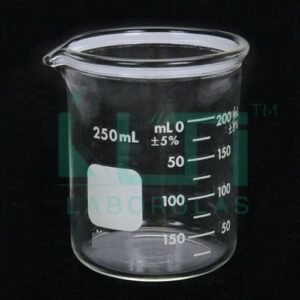- Made from ASTM E-438 Type 1, Boro 3.3 heat resistance glass
- These Flasks comes with Ground Joint manufactured as per ASTM E-1403 type 1 specifications
- The Flasks are printed in white colour enamel
| PART No. | Capacity (ml) | Socket Size | Overall Height (mm) | Overall Dia (mm) | PACK Qty. |
| 5580-50 | 50 | 24/40 | 100 | 51 | 2 |
| 5580-100 | 100 | 24/40 | 118 | 64 | 2 |
| 5580-200 | 200 | 24/40 | 128 | 75 | 2 |
| 5580-250 | 250 | 24/40 | 140 | 85 | 2 |
| 5580-300 | 300 | 24/40 | 148 | 88 | 2 |
| 5580-500 | 500 | 24/40 | 158 | 105 | 2 |
| 5580-1000 | 1000 | 24/40 | 185 | 130 | 2 |
| 5580-2000 | 2000 | 24/40 | 215 | 165 | 2 |
| 5580-25 | 25 | 24/40 | 90 | 41 | 2 |
| 5580-50-A | 50 | 19/22 | 80 | 51 | 2 |
| 5580-100-A | 100 | 14/20 | 100 | 64 | 2 |
| 5580-100-B | 100 | 19/22 | 100 | 64 | 2 |
| 5580-250-A | 250 | 14/20 | 120 | 85 | 2 |
| 5580-250-B | 250 | 19/22 | 120 | 85 | 2 |
| 5580-500-A | 500 | 19/22 | 140 | 105 | 2 |
| 5580-10 | 10 | 14/20 | 59 | 31 | 2 |
| 5580-10-A | 10 | 19/22 | 59 | 31 | 2 |
| 5580-25-A | 25 | 14/20 | 75 | 41 | 2 |
| 5580-25-B | 25 | 19/22 | 75 | 41 | 2 |
| 5580-5 | 5 | 14/20 | 46 | 25 | 2 |
Here are some common uses of a Single Neck Round Bottom Flask with a Joint in a laboratory setting:
- Reaction Vessel: These flasks are often used as reaction vessels for chemical reactions. The round bottom shape promotes even heating and stirring, while the single neck with a joint allows for the attachment of various laboratory apparatus or glassware components.
- Distillation: Single Neck Round Bottom Flasks with Joints are suitable for distillation processes. The joint allows for easy connection to distillation apparatus, such as condensers and receivers, facilitating the separation of components based on their boiling points.
- Synthesis and Organic Chemistry Reactions: These flasks are commonly employed in organic chemistry for the synthesis of organic compounds. The single neck with a joint allows for the addition of reagents or the attachment of other equipment like condensers, dropping funnels, or reflux setups.
- Heating and Evaporation: The round bottom shape is well-suited for even heating, making these flasks suitable for applications that involve heating and evaporation of solvents or other volatile substances.
- Refuxing: The flask can be used in reflux setups where the vapors produced during a reaction are condensed and returned to the reaction mixture. This is particularly useful for reactions that require extended heating periods.
- Temperature Control Experiments: The single neck allows for the insertion of a thermometer or temperature probe, making these flasks suitable for experiments that require precise temperature control.
- Pressure Reaction: Depending on the material and design, these flasks may be suitable for reactions carried out under pressure.







